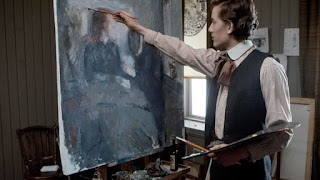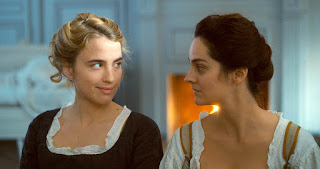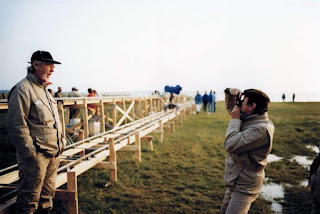Edvard Munch (1974), Peter Watkins
Edvard Munch is presented as a period docudrama which traces the beginnings of the artistic career of the Norwegian painter Edvard Munch. From his pictorial research to the reception of his work by the public and critics, from love dramas to the fear of the disease that befalls his family like a curse, from his rejection of bourgeois society to its reception by groups anarchists or revolutionary artists, the film paints a subjective and intimate portrait of Munch while linking the artist to his time and to the great cultural and social movements which agitated the end of the 19th century.
One can weave innumerable links between the conception of art and life by Peter Watkins and Edvard Munch. Both these artists are rebels and never stopped fighting the establishment and bourgeois society, but also a modeled and frozen artistic vision. And both challenged the conservative and conventional practices of the artforms they belonged to.
Coming to the film Edvard munch is conceived as a nesting doll, the whole creative process of Watkins consists in the fact that to apprehend Munch, one must understand his relations with his family, with his entourage (the Bohemian therefore).And to understand this Bohemia, you have to understand what Kristiania was at the time, at the cultural, artistic, political and religious level. To understand Kristiania, you have to place her in a global context, showing the great upheavals of the end of the 19th century.
Also read a review of Watkins's Punishment Park
Watkins applies the same method when he talks about painting, he broadens his representation of things as much as possible, showing that everything is inextricably linked.The filmmaker offers us an unprecedented work with an almost unique form in the audiovisual sector, because it was filmed against the monoform, against the world clock.
Without struggling, without this desire to bend the medium to his will and his vision, and not for this to be formatted by a unique form of representation, Watkins could not have made a film of such density, such depth, and scale such that it manages to follow the contours of a life. The director's political vision, his revolt, influences his artistic work just as Kristiania's rigid society deeply shaped Munch's painting.
Peter Watkins pursues his signature method, a mock documentary set in the 18th century, filmed in the purest tradition of the BBC, linking interviews and real shots as if a camera had been able to film the events in the moment of their unfolding. In Munch he explores a new territory by playing on layers of time and repetition.
Because Watkins, beyond the simple biography of the artist, wants to capture the very essence of a man's life, to capture all of its components in an incredible kaleidoscope. To explain Munch's acts, whether as creator or lover, the director refers to his past, brings back memories, thereby expressing the anxieties, fears and traumas that inhabit the artist.
If Watkins would have followed Munch's life in a linear fashion, he would have never ceased to tie this thread with images or sounds from the past which explain and resonate each act of man. Even the coughing fits return like a leitmotif, marking the omnipresence of illness and death in the painter's life.
The soundtrack, as detailed as the editing, participates in the very structure of the story.For
example the screeching of a blade scraping the canvas and its repetitions. Watkins in true genius, seems to have found by this unprecedented form the purest way of approaching as close as possible to the human thought. We dive into a life, a society that we have not lived, but that we are able to understand.
Watkins creates his work mainly through editing and mixing, he does not neglect the moment of filming, whether it is at the level of a constantly reflected image or the play of the actors which is an essential component of the work to come. Thus he constantly favors close-ups of faces, offering little openness to the outside world, a resonance of agoraphobia that pulls Munch apart.
Watkins also works extensively with color, embellishing his film with a blue that for Munch represented death. The painter was obsessed with the use of color, until an artistic period immersed in blue. Watkins echoes this artistic concern, he banishes red, uses blue filters. The film, like the painter's canvas, bends to Watkins' aesthetic vision. The film becomes painting.
Despite all the artifices of the representation unfolded before our eyes by Watkins, a miracle occurs: we are in the 19th century, we see the events as they unfolded, we know that everything is fictitious but we also know that we are facing reality. A completely subjective reality that we accept because the film manages to capture what for everyone is the very leaven of life.







Comments
Post a Comment